|
|
|
|
During this review of the Sigma 8-16mm F4.5-5.6 DC HSM, I will try to find
out if it fulfill my
expectations and needs as an enthusiastic amateur.
|
|
The first thing I wanted to find out was "How much wider will the
Sigma 8-16mm go compared to the trusty old Sigma 10-20mm that
I own?
The answer can best be described with a test shoot put your mouse
pointer on the image below to switch between Sigma 10-20mm @
10mm Vs the 8-16mm set to 8mm.
|
|
|
|
My first impressions of this lens is wow! This is a real wide angle lens
and it has nice colors
and also seem to have less distortion than the
10-20mm I compare it to.
The physical impression key words is
solid, smooth and nicely put
together. On the camera and with the lens cap on it can be mistaken
for a 18-200 lens because its size is almost identical to my Nikon 18-200mm VR.
|
Light falloff Sigma 8-16mm F4.5-5.6 DC HSM (Vignetting)
|
In regards of light falloff I think this lens is a great performer and
doesn't suffer from vignetting as much as you might expect from a
such wide lens. The table below contains some examples and are taken
from the extremes 8mm and 16mm, I guess you can imagine what's in
between :0) |
|
| |
Testing the Sharpness of the Sigma 8-16mm Ultra Wide Zoom
|
This test is like all my other tests not particulary ultra high sience but
you might be able to get some idea of the performance of the Sigma
8-16 HSM by judging the crops below.
|
After selection has been made be patient and let the new image crop load, JPG quality is set to High (10)
so it might take some time if your internet connection is slow.
|
|
|
|
|
Crops are taken from this setup and the camera has been moved to different
distances to fill the frame at 8,12 and 16mm focal length.
All shots have been performed With my Nikon D200 at ISO 100
in camera sharpening settings was set to lowest possible and images are
afterwards sharpened in PS with the settings R=0.3 T=0 A=400 Crops are
at 100%
As you can see on the image below I didn't manage to get a totally even
lighting during this test due to my amateurish equipment for artificial light
so don't try to judge the colors and contrast of those images since there are
better ways to do this.
Crops for Center and Corner are taken at the position
of the red squares.
|
|
|
|
|
|
Color Fringing ghosting etc.
|
 <> 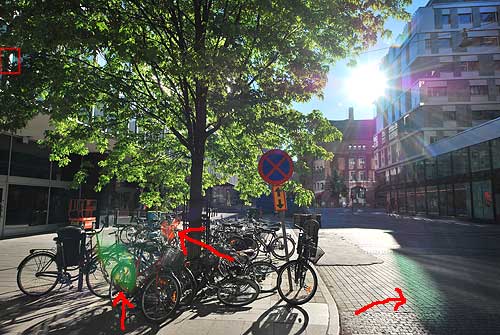 |
Image above was shot in a way that most photographers know to be a
no no. However I did it to try to find some limitations of this lens.
In picks shot this way with other various lenses you can expect to find
more or less severe color fringing around the backlit leafs.
In this case I didn't find anything like that in the tree of this photo I
actually had to zoom to 200% to find anything at all and then I only
found it in the window frame behind the tree (crop above is from the small red
square in the upper left corner @ 100%) but not even
that is anything I can't live
with.
By the arrow you can find a few more defects/light fenomens that
normally don't show if you just take normal care of the light situation
I also like the way the sun star is captured despite only 7 blades in the
aperture.
|
|
The same tree but at a more sensible angle against direct sunlight the
sun is also filtered trough the tree. Even this image was virtually free
from fringes and I could only find signs of it at the edges of the image
in the window frames. No ghosts here. It seems like the the new FLD
glass lenses work just fine :0)
|
Wind angle lens usage
|
|
Some people buy a wide angle lens to be able to cover a lot in small
spaces. However a wide angle lens is much more funny if you are not
to shy to get clooose to the subject that will be photographed.
Look at the images above, the left picture is
a normal boring photo of a
part of a Boeing 737 aircraft, in the middle of the left image you can
find the engine exhaust pipe (just above the wheel). The left image
shot with the 8-6mm sigma @ 16mm from about 4 meters distance.
Now look at the right hand image, much more dramatic (my opinion)
this image was captured with the Sigma 8-16mm HSM @ 8mm and I
had the edge of the exhaust pipe just a few millimeters from the left
edge of the lens shade of the lens.
This is what makes wide angle photography fun, wide angle lenses help
you create fun and interesting images that appeals and catch many
peoples interest
but remember not to be afraid to get closer than usual
to your subject/victim :0)
|
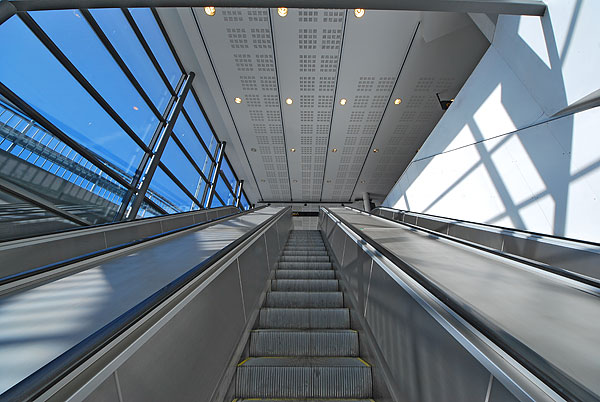
In this photo the 8mm setting makes the escalator
to appear much longer than it is in real life!
|
To the left:
The flight deck of a Boeing 737
is a small space with lots of
controls, in this case the 8mm
seting of the Sigma helped me
to cover almost 100% of the
pilots work environment in the
737 aircraft.
This image lies a bit because it
makes the flight deck appear
much deeper than it is in real
life.
This is however not really lens
distortion it's more of a
different perspective over
things :0)
I will investigate the distortion
characteristics in regards of
curvature further here below. |
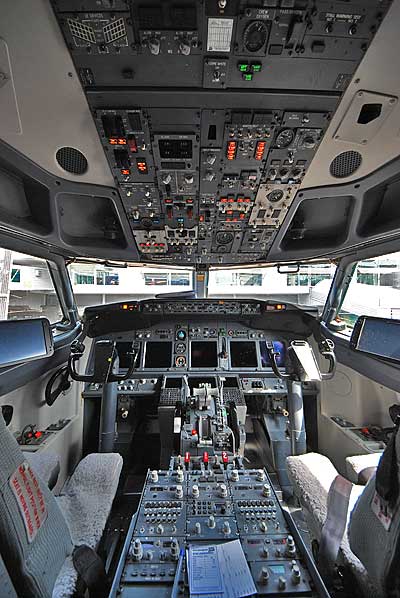 |
|
|
Distortion
|
The Sigma 8-16mm HSM has just a small amount of distortion that is
quite easy to correct for I will show you examples of the classic boring
brick wall as well as some real life examples at the focal lengths
8,10,12,14 and 16mm right here below.
|
@ 8mm you will find that
things in the corners gets
quite bent
and this makes
the brick wall to look a bit
like a barrel.
But even at 8mm the
things in a large mid
section looks quite straight.
Put your mouse pointer over
the images to watch the distortion
corrected image (PT-Lens used)
PT-Lens website |
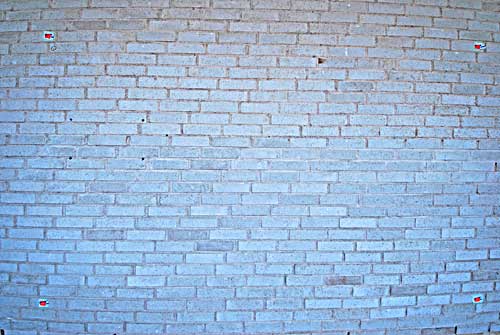 |
@ 10mm the
characteristics looks
pretty
much the same as at 8mm. |
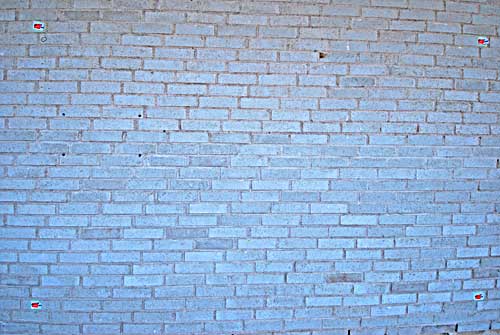 |
@ 12mm, Now even the
corners starting to
straighten out and there
is only in the outer
extremes where you can
find
some slight barrel
distortion. |
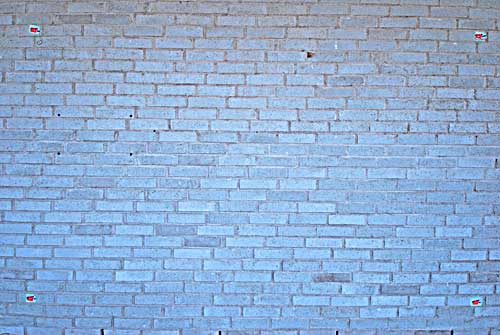 |
14mm even less distortion
than at 12mm, same type
"barrel" but in real life
barley noticeable.
|
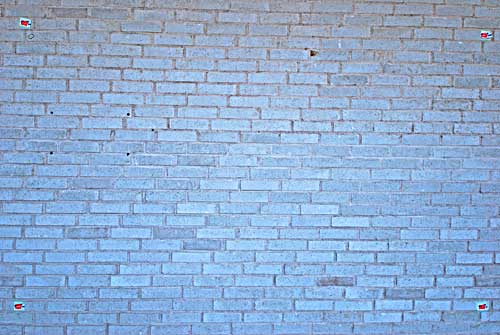 |
@ 16mm I would like to
call this straight! |
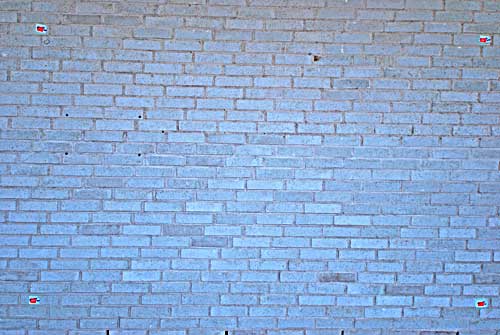
|
|
Additional examples of distortion/correction
|
|
Hold your mouse pointer over the image above to get a preview
screenshot of the PT-lens corrections.
I must say that I'm impressed, this isn't any distortion to be upset of
for a lens this wide I will probably just ignore it in most cases.
However PT-lens makes things easy in case I find a situation
where the
small distortion might
bothers me and I can even use PT-lens to
change perspective view in case I like to straighten my city building shots
. |
|
Built quality
|
The Sigma 8-16mm 1:4.5-5.6
HSM is very nice put together
and would have qualified to
get an EX label if it wouldn't
have been a
DX only lens.
AF is silent focus and zoom
ring spins so smooth
that I
can't complain and it is
equipped with a switch for AF/MF so I don't have to
set this by entering the menu
of my Nikon D60.
The front lens element
protrudes quite a bit and the
shade is
therefore
permanently attached
not only because you need it
but also to protect the lens.
Lens cap is a two pease design
and contains of a regular lens
cap + a black aluminum tube
that slides over the lens shade
to seal and protect
the front of
the lens. |

The Built quality of the
Sigma 8-16mm is high.
Above the lens cap 2ps design. |
To the right, this image is a
example
of what you get if you
forget yourself and only
remove the normal lens cap
and leave the tube part
installed.
This can also be useful if you
like the peep hole effect :0)
Lens at 8mm in this example if
you set it to 16 only the
corners will be cut off.
|
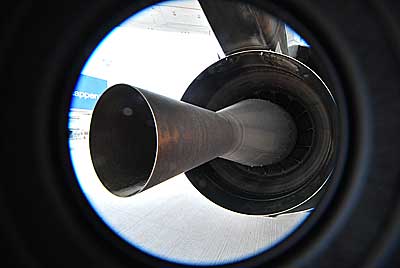 |
|
Final words
|
The Sigma 8-16 HSM is a fine lens, for me its a keeper and a perfect
company for my Nikon 18-200mm VR to become a flexible vacation
package along with the small and light Nikon D60.
Besides the protruding front lens there is only one more issue that I
can think of and that is the lack of possibility to use filters.
I bet some one will make a filter holder for it but the filters will have to
be huge to cover the 8mm wide side of this lens.
Lee filters "www.leefilters.com" have made a filter holder for square
150mm filters to fit the Nikon 14-24mm F2.8
and they plan to make
that holder adaptable for other super wide lenses to so I guess it might be available for the Sigma 8-16mm in the future another option is a
DIY filter holder but the large filters needed will still be expensive.
I have also found a source on the internet that say that you can
successfully useCokin X-Pro Series Filters with the Nikon 14-24mm with the Nikon 14-24mm so so
I guess this filter system could also be adapted to the Sigma 8-16mm
with a bit of DIY.
More about filters for the excellent Sigma 8-16mm lens here:
Filters
Now I will start to use my new toy in a creative and fun way to capture
some great shots, a small gallery of sample images on this page will
complete this review
and will be posted when they are produced.
That's all for now!
|
|
|
|
|
Sigma 8-16mm F1:4.5 - F5.6 Tech data (Lifted from the Sigma website)
|
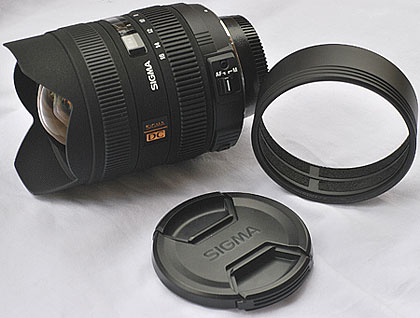 SIGMA 8-16mm F4.5-5.6 DC HSM SIGMA 8-16mm F4.5-5.6 DC HSM |
The SIGMA 8-16mm F4.5-5.6 DC HSM with the new FLD glass lenses.
|
|
8-16mm F4.5-5.6 DC HSM
The Sigma 8-16mm F4.5-5.6 DC HSM is the first ultra-wide zoom lens with a minimum focal length of 8mm, designed specifically for APS-C size image sensors.
This lens has an angle of view (when used on digital cameras with an APS-C size image sensor) that is equivalent to a 12-24mm lens when used on a full frame sensor
equiped
camera.
The wide-angle of view from 121.2 degrees* produces striking images with exaggerated perspective, enabling photographers to emphasize the subject.
Four FLD glass elements, which have the performance equal to fluorite glass, compensate for color aberration. One hybrid spherical lens and two glass mold elements give excellent correction for distortion and astigmatism.
Incorporating an inner focusing system, the lens produces high-definition images throughout the entire zoom range. The Super Multi-Layer Coating reduces flare and ghosting while superior peripheral brightness ensures high contrast images throughout the entire zoom range.
This lens incorporates Hyper Sonic Motor (HSM), ensuring quiet and high speed auto focus, as well as full-time manual focus capability. It has a minimum focusing distance of 9.4 inches throughout the entire zoom range, which allows photographers to emphasize the subject by creating exaggerated perspectives.
This lens has a compact construction with an overall length of 4.2 inches and a maximum diameter of 2.9 inches.
*The angle of view varies depending on which camera the lens is mounted on.
|
Image and data taken from www.sigmaphoto.com
|
- Lens Construction:15 Elements in 11 Groups
- Minimum Focusing Distance:24cm / 9.4in.
- Angle of View:114.5-75.7 degrees
- Maximum Magnification:1:7.8
- Number of blades:7pcs
- Dimensions:Diameter 75mm×Length 105.7mm /3.0in×4.2in.
- Minimum Aperture (Wide) F22
- Weight:545g/19.2oz.
*Vignetting will occur if the lens is used with digital cameras with image sensors larger than APS-C size or 35mm SLR cameras.
*AF will not function with Pentax ist* series and K100D DSLR cameras that do not support HSM. * Filters cannot be attached to this lens.
|
|
|
Page 2 more example shoots ->
Page 3 Filters for the Sigma 8-16mm lens ->
|
|
|
|
|
|
|
|